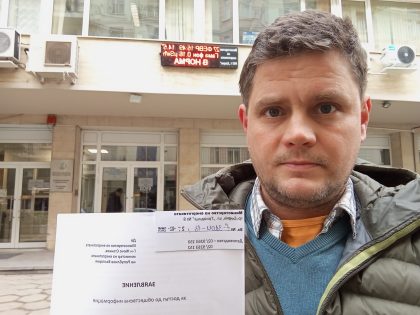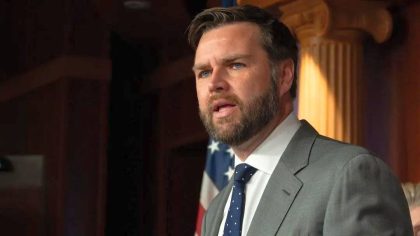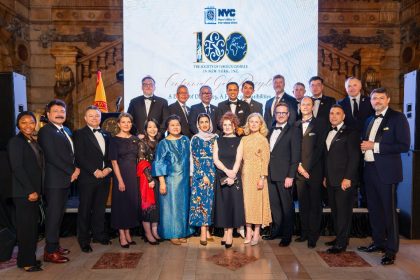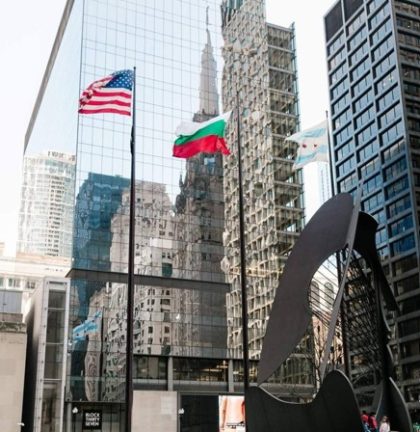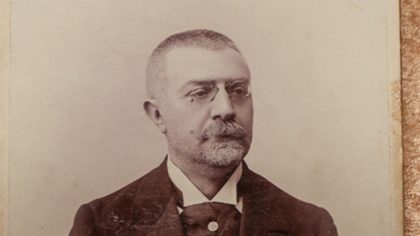(Updated March 2011)
- Bulgaria has two nuclear reactors generating about 35% of its electricity.
- There are proposals to restart two others, shut down under duress as a condition of Bulgaria joining the European Union.
- Bulgaria’s first commercial nuclear power reactor began operating in 1974.
- Government commitment to the future of nuclear energy is strong and construction of a new nuclear plant is planned.
Electricity consumption in Bulgaria has been growing only slowly since 1980a but the country has been a significant exporter of power. However, with the closure of two older nuclear units at the end of 2006, electricity exports have dropped slightly.
In 2006 – the last year of operation of the two 405 MWe Kozloduy reactors (units 3 & 4) – Bulgaria’s National Electricity Company (NEK) produced 45.8 billion kilowatt hours gross and exported 7.8 of these (net) to Greece, Turkey, Serbia and Macedonia. (Bulgaria was vital in supplying power for the 2004 Athens Olympic games.) Of the total generation in 2006, nuclear supplied 19.5 billion kWh (42%), coal 19.1 billion kWh, hydro 4.6 billion kWh and a little from gasb. In 2007 – the year after the closure of Kozloduy 3 & 4 – gross electricity production was 43.3 billion kWh, of which 14.6 billion kWh (34%) was from nuclear, 22.4 billion kWh (52%) from coal, 3.2 billion kWh (7.5%) from hydro and 2.3 billion kWh (5.4%) from gas. Net exports in 2007 were about 4.5 billion kWh (10%) – down from the 14% average of the preceding years.
Nuclear industry development
Since 1956, the Bulgarian government has favoured the use of nuclear power for electricity. The 2 MWt IRT-2000 research reactor started up in 1961 and in 1966 an agreement was signed with the Soviet Union for commercial units, providing the basis of the country’s power program. In the absence of Bulgarian safety and regulatory bodies at that stage, these functions defaulted to Soviet standards.
The first pair of reactors were VVER-440 model V-230, built and commissioned in under five years. The second VVER-440 pair incorporated many of the much-improved safety features of the V-213 modelc. The third pair were the larger VVER-1000 units, model V-320. All these were part of the Kozloduy plant, close to the Danube River border with Romania.
A second site was chosen near Belene, also near the Danube border with Romania. This was with a view to building four or six large units. Site works started in 1980 and construction of the first VVER-1000 V-320 unit started in 1987. This was partly built (40%, with 80% delivery of equipment) but was aborted in 1991 due to lack of funds.
Operating nuclear power reactors in Bulgaria
| Reactor | Type | Model | Net MWe | First power |
| Kozloduy 5 | VVER-1000 | V-320 | 953 | 11/87 |
|---|---|---|---|---|
| Kozloduy 6 | VVER-1000 | V-320 | 953 | 8/91 |
| Total (2) | 1906 | |||
Planned and proposed nuclear power reactors in Bulgaria
| Reactor | Type | Model | Net MWe | Construction start | Startup |
| Belene 1 | VVER-1000 (AES-92) | V-466d | 1060 | 2011 | 2016 |
|---|---|---|---|---|---|
| Belene 2 | VVER-1000 (AES-92) | V-466d | 1060 | 2011 | 2017 |
| Kozloduy 7 | AP1000? | ||||
| Total planned (2) | 2120 | ||||
Shutdown nuclear power reactors in Bulgaria
| Reactor | Type | Model | Net MWe | First power | Shutdown |
| Kozloduy 1 | VVER-440 | V-230 | 405 | 7/74 | 12/02 |
|---|---|---|---|---|---|
| Kozloduy 2 | VVER-440 | V-230 | 405 | 8/75 | 12/02 |
| Kozloduy 3 | VVER-440 | Enhanced V-230 |
405 | 12/80 | 12/06 |
| Kozloduy 4 | VVER-440 | Enhanced V-230 |
405 | 5/82 | 12/06 |
Kozloduy
During European Union (EU) accession negotiations with the European Commission (EC), Bulgaria committed to closing Kozloduy 1 & 2 by the end of 2002 and units 3 & 4 by the end of 2006e. All four units are V-230 model VVER-440 reactors, which the EC had earlier classified as non-upgradable. However, units 3 & 4 were of an improved design and closer to the later V-213 design than any others of their classf.
Between 1991 and 1997, over 900 modifications to systems and equipment were carried out on Kozloduy units 1-4 in close consultation with the International Atomic Energy Agency (IAEA), the World Association of Nuclear Operators (WANO) and several other organizations to improve safety and bring them closer to international norms, especially for units 3 & 4. This short-term safety upgrading program cost some €130 million.
Over 1998-2002, a more thorough modernization program was undertaken in line with IAEA safety criteria to bring the units into conformity with current world standards. This so-called complex modernization program was approved by the Bulgarian Nuclear Regulatory Agency in 1998, and revised in 2000, but only fully implemented on units 3 & 4.g Units 1 & 2 were closed own at the end of 2002.
An IAEA mission in 2002 reported very favorably on units 3 & 4.1 Summarizing the conclusions, the IAEA 2002 Annual Report states: „The team concluded that the operational and design safety at Kozloduy now corresponds to the level of improvements seen at plants of similar vintage elsewhere. Many of the safety measures adopted for these plants in the design, operation and seismic areas exceeded those that were foreseen2. Later, in 2003, after a two-week scrutiny by 18 international inspectors, the World Association of Nuclear Operators (WANO) reported that units 3 & 4 met all necessary international standards for safe operation. Then, in November 2003, a review by 11 experts from the European Council’s Atomic Questions Group (AQG) found that issues arising in the previous AQG review of 2001 had been addressed.
In the meantime, the Bulgarian government tried to renegotiate the agreed 2006 shutdown and gain a reprieve until the licences expire (2011 & 2013), giving a 30-year operating life. However, despite a 2005 opinion poll showing 75% support for keeping the two reactors running, the government finally ordered them to be shut down at the end of December 2006. Bulgaria joined the EU on 1 January 2007.
Electricity shortages in the Balkan area have become acute since early in 2007. Apparently the two reactors could be brought back into operation in six months. Bulgaria’s EU accession agreement says that in a national crisis the country has the right to resume power generation at Kozloduy 3 and 4.
In October 2009, the European Commission granted Bulgaria an extra €300 million decommissioning, clean-up and waste treatment, bringing the overall compensation package to some €850 million3.
An upgrade and modernisation program for the V-320 units 5 & 6 extended to 2006, but there is no great concern about the safety of these units, which conform well to international standards. The units are currently licensed to 2017 and 2019, and there are plans to extend their operating lifetimes beyond the current 30 years to 50 years.
Early in 2010, a joint assessment by Kozloduy and Spain’s Iberdrola reported that a seventh unit at the site would be viable, and the government is considering this, and a possible eighth unit, independently of plans for Belene. Westinghouse and GE have expressed interest in the project, using the AP1000 or a GE design respectively.
Belene
The Bulgarian government began considering completing the Belene plant in the run-up to the closure of the first two units of Kozloduy and, in 2003, five reactor vendors expressed interest to the Energy Ministry in completing Belene or building new units there. Early in 2005, the government approved the construction of Belene as a 2000 MWe plant. Parsons E&C Europe (now WorleyParsons) was appointed architect-engineer for the project to oversee redesigning it. Two consortia submitted bids to build the plant. Both had two variants: using the old VVER-1000 V-320 equipment already on site, and building afresh two AES-92 unitsh.
In October 2006, the National Electricity Company (Natsionalna Elektricheska Kompania, NEK) chose Atomstroyexport (ASE) over a Skoda-led consortium to build the plant comprising two 1060 MWe capacity third-generation VVER-1000 (AES-92) unitsi. Russia’s ASE leads a consortium including Areva NP, Siemens and Bulgarian enterprises in the project. The contract was signed in January 2008, for €4 billion excluding first cores but with allowance for inflation adjustment. Projected power cost was €3.7 ¢/kWh.
At the end of 2007, the European Commission responded positively to the choice of reactor technology, saying: „Compared to previous VVER-1000 Russian reactor types in operation, the AES-92 should comprise advanced technology passive safety systems and are considered to be in compliance with European Utility Requirements (EUR).“4
Construction at Belene was officially restarted in September 2008 – though only preliminary site activities were carried out – and was later suspended until a strategic investor for the project could be found. Completion of the units had originally been expected in December 2013 (unit 1) and June 2014 (unit 2).
In April 2009, ASE and Areva NP signed a contract to develop documentation on the instrumentation and control (I&C) systems. Meanwhile, in December 2008, ASE signed an €82 million contract with Russia’s OMZ Izhorskiye Zavody to supply reactor pressure vessels, steam generators and related equipment, total 1300 tonnes. (The €82 million contract figure is probably net of the V-320 equipment returned to ASE for use by Atomenergoprom at Kalinin in Russia.) The first pressure vessel is scheduled to be shipped in December 2011 and the second in September 2012. In June 2009, a RUR 2.8 billion (€65 million) contract was signed for the steam generator shells to be finished by ZiO-Podolsk and shipped 2010-12.
In September 2009, the new government of the Citizens for European Development of Bulgaria (GERB) party (which came into office in July 2009) said that it would not take a 51% stake in the Belene project as had been planned, and that 20% looked more practical, to be held by Bulgarian Energy Holdings (BEH). German utility RWE had been set to take a 49% stake in the project (with NEK holding the remaining 51%), but pulled out in October 2009j.
Early in 2010, Russia offered a loan to finance construction activities until a strategic investor was found, but this offer was rejected by the Bulgarian governmentk. Later in 2010, at the end of November, NEK signed a memorandum of understanding (MoU) with Rosatom to establish a new project company – Belene Power Company – with initially 51% being held by NEK. For its part, Rosatom is to endeavour to arrange financing for the project, attract other investors, and facilitate ASE achieving commissioning of the reactors by 2016 and 2017.8 NEK will transfer the site and work to date as in-kind contributions. The value of these contributions is to be agreed, but is likely to be of the order of €450 million.
The non-binding agreement calls for Belene Power Company to be established before April 2011 and for construction to resume before October 2011. However, there remain several issues to be resolved, notably the cost of the projectl.
However, in March the Energy & Economy minister said that the equipment being built for Belene might be installed alongside similar units at Kozloduy instead, though it is not clear how that would resolve the financing question.
At the time that the MoU was signed, it was announced that Finland’s Fortum had agreed to supply expertise which can earn it 1% of the project company and its output, and French Altran Technologies will contribute engineering services for the same equity. Rosatom’s stake in the project is still to be decided. Other investors are being actively soughtm. Development of the plant’s economic model and the selection of investors will be carried out by HSBC, which was selected by BEH as project consultant in November 2010.
Rosatom is keen to supply fuel for 60 years, and has said that work to the value of €2.5 billion could be available for Bulgarian companies, mostly in engineering.
Fuel cycle
All front end fuel cycle services in Bulgaria are provided by Russia’s TVEL through Techsnabexport (Tenex).
Radioactive waste management
The State Enterprise Radioactive Wastes (SE-RAW) is responsible for much of the waste management.
Under a 2002 agreement, Bulgaria has been paying Russia US$ 620,000 per tonne of used nuclear fuel repatriated for reprocessing in the Mayak plant at Ozersk, though some has also been sent to the Zheleznogorsk plant at Krasnoyarskn.
Used fuel is initially stored in pools at each reactor, but in 1990 a pool-type storage facility was constructed at Kozloduy to take fuel from all the units. This was upgraded and a new licence issued by the Bulgarian Nuclear Regulatory Agency (NRA) in 2001. A new €49 million dry storage facility for 2800 VVER-440 used fuel assemblies is being built near this at Kozloduy, with finance from the Kozloduy International Decommissioning Support Fund administered by the European Bank for Reconstruction and Development. This Dry Spent Fuel Storage Facility (DSFSF) is being constructed by a joint venture partnership between Nukem Technologies and GNS. Later expansion to accommodate 8000 VVER-440 and 2500 VVER-1000 assemblies is envisaged. Commissioning of the first stage is expected in 2010. In January 2010, the contract was amended to extend the building to provide space for a further 3192 fuel assemblies. This extension building is expected to be finished in 2011.
Also at Kozloduy is a low- and intermediate-level radioactive waste treatment and storage facility.
In mid-2005, the Council of Ministers resolved that a 50,000 cubic metre national near-surface low-level and intermediate-level waste disposal facility should be constructed by SE-RAW for operation in 2015. The National Repository for Disposal of Radioactive Waste (NRD RAW) will be paid for from the radioactive waste fund. In April 2009, SE-RAW awarded a €2.6 million three-year contract to a consortium comprising of Empresarios Agrupados Internacinal SA , VT Nuclear Services and ENPRO Consult of Bulgaria to project manage the facility. The consortium is responsible for site selection, design, safety assessment construction and commissioning of the facility.
A near-surface repository Novi Han, about 35km southeast of Sofia, is licensed for non-nuclear radioactive wastes.
Two national funds were created in 1992, one for the safe disposal of radioactive waste and one for the decommissioning of nuclear facilities, but these funds did not function properly until 1999. The funds are independent from the nuclear industry and managed by the government. The main contribution to the two funds comes from an electricity price levy specified by the Bulgarian Council of Ministers. The Kozloduy nuclear plant pays 3% of the price of its power into the waste management fund and a further 7.5% into the decommissioning fund.
Decommissioning
In addition to the national decommissioning fund, in June 2001 the Kozloduy International Decommissioning Support Fund (KIDSF) was established at the European Bank for Reconstruction and Development (EBRD) to finance decommissioning activities of Kozloduy 1-4 as well as support energy projects in the country. In 2009, almost €120 million worth of contracts were signed under the KIDSF, including a €22.5 million contract for Onet Technologies for the treatment of radioactive concentrates and a €30 million contract for a joint venture between Iberdrola Ingenieria y Construccion and Belgoprocess NV to supply a waste treatment and conditioning facility.
The licences for Kozloduy 1 & 2 were transferred to State Enterprise ‘Radioactive Waste’ (SE-RAW) by the Nuclear Regulatory Agency in October 2010, in anticipation of decommissioning work.
Research and development
The IRT–2000 pool-type research reactor was built by Moscow’s Kurchatov Institute and went critical in 1959. Its original power was 1 MWt, but this was increased to 1.5 MWt in 1965 and to 2.0 MWt in 1970. In 1989, it was temporarily shut down and is being reconfigured to run on low enriched uranium (LEU) with 200 kWt power. It is operated by the Institute for Nuclear Research and Nuclear Energy (INRNE) of the Bulgarian Academy of Sciences in Sofia.
Highly enriched uranium (HEU) fuel (36% enriched) for the reactor was returned to Russia in 2003, and the HEU and LEU used fuel followed in 2008.12 As of mid-2010 it was shut down and being rebuilt, but no money was available.
Regulation and safety
The Energy Ministry is responsible for the nuclear power industry. The two main entities are the Nuclear Regulatory Agency (NRA) set up under the Safe Uses of Nuclear Energy Act 2002 and the Kozloduy Nuclear Power Plant plc. The NRA took over the functions of its predecessor, the Committee on the Safe Use of Atomic Energy for Peaceful Purposes (CUAEPP), originally set up under a 1985 Act.
The NRA is responsible for both regulation of nuclear installations in relation to safety and radiation protection, and also the management of radioactive wastes. It also undertook all nuclear functions related to European Union accession. The NRA has been a member of the Western European Nuclear Regulator’s Association (WENRA) since 2003.
The Ministry of Health is also involved with radiation protection, and determines relevant standards. The Ministry of Environment and Water monitors radiation levels throughout the country.
Non proliferation
Bulgaria is a party to the Nuclear Non-Proliferation Treaty (NPT) as a non-nuclear weapons state. Its safeguards agreement under the NPT came into force in 1972. It is member of the Nuclear Suppliers Group. In 2000, it signed the Additional Protocol in relation to its safeguards agreements with the International Atomic Energy Agency, and this is in force.
Further Information
Notes
a. Electricity consumption in 2007 was a little under 4500 kWh per person. [Back]
b. Over 90% of the country’s gas supply comes from Russia. [Back]
c. The first four units (Kozloduy units 1-4) were all classed as VVER-440 V-230, even though the later pair (units 3 and 4) had many features of the later V-213 model (see also Note f). [Back]
d. The Belene plant was originally envisaged to have be a VVER-1000 model V-320 plant. Several evolutionary versions of the V-320 exist, including the V-392 (which is considered to be a Generation III design) and the later V-466, the model now planned for Belene. The Belene plant type (AES-92, also referred to as the NPP-92), reactor type (VVER-1000 or WWER-1000) and reactor model (which might be referred to as V-320, V-392 or V-466) tend to be used interchangeably. Detailed information on the VVER-1000 V-466 can be found in Status of advanced light water reactor designs 2004, International Atomic Energy Agency, IAEA-TECDOC-1391, ISBN 9201048041 (May 2004) [Back]
e. Negotiations on the early closure of Kozloduy 1-4 commenced in the early 1990s. In June 1993, the Nuclear Safety Account (NSA) Agreement was signed by the Bulgarian government, the Bulgarian National Electricity Company (NEK) and the European Bank for Reconstruction and Development (EBRD). According to this agreement, Bulgaria had to close Kozloduy 1 & 2 in 1997 and units 3 & 4 in 1998. This agreement included €24 million for safety upgrades of the units before closure as well as measures to secure energy supply. Following the failure of this agreement, in 1999, the European Commission (EC) and the government of Bulgaria signed a memorandum in which both sides agreed that units 1 & 2 must be closed before 2003 and units 3 & 4 before 2006 (according to the EC) or 2008 and 2010 respectively (according to the Bulgarian government). In return for early closure, Bulgaria was offered €200 million compensation, and this was increased to €550 million when 2006 was agreed as the shutdown dates for units 3 & 4. The closure and subsequent decommissioning commitments concerning Kozloduy 1-4 are included in Article 30 of the Act concerning the conditions of Accession of the Republic of Bulgaria and Romania and the adjustments to the treaties on which the European Union is founded (2005 Act of Accession). See also information page on Early Soviet Reactors and EU Accession. [Back]
f. Kozloduy 3 & 4 had a number of important differences from the standard V-230 model that makes them closer to the more advanced V-213 design. These include a stainless steel-lined pressure vessel (alleviating vessel embrittlement), three safety system channels, and a low pressure emergency core cooling system. [Back]
g. Several major upgrades were carried out on Kozloduy 3 & 4, bringing the units in line with international standards. One of the most important upgrades was the installation of the jet vortex condenser, which assures structural integrity in the event of an accident by passively reducing the containment pressure. Even with a pipe break of 500 mm, structural integrity is still ensured. The core damage frequency was reduced to 1.6 x 10-6/yr – almost an order of magnitude lower (i.e. better) than international standards. As a result of the upgrades carried out up to 2002, the safety analysis report of units 3 & 4 was revised. This was the basis for the subsequent favorable assessments of Kozloduy 3 & 4, in particular by the IAEA.
Further safety-related work on units 3 & 4 was undertaken over 2003-05. Other operational safety improvements extended to units 5 & 6, and more than €120 million per year has been spent. [Back]
h. The AES-92 design has VVER-1000 reactors considered to be Genereation III. Essentially, the AES-92 option was for a later generation of VVER-1000 than the V-320 model originally planned for Belene. See also Note d above. [Back]
i. Skoda Alliance proposed an upgraded V-320 model reactor based on the Temelin units in the Czech Republic, for €5 billion. (Skoda manufactured and delivered the V-320 reactor pressure vessel for Belene 1 in 1989.) The winning ASE bid proposed third-generation VVER-1000 reactors (model V-466), with the equipment supplied before 1991 being bought back, for use in Russia. The new units are based on the AES-91 plant built by ASE at Tianwan in China. NEK said that the AES-92 with a third-generation reactor satisfied stringent Western European safety standards and so would be more acceptable in the European Union, which Bulgaria joined in January 2007. [Back]
j. In 2007, NEK sought equity or strategic (customer) partners for a 49% interest in the project. Applications were received from ten companies; six were shortlisted in September and five subsequently bid in October 2007: Suez’s Electrabel of Belgium, Enel of Italy, German companies RWE and E.ON, and CEZ of the Czech Republic (EDF dropped out of the bidding). In March 2008, NEK announced that RWE Power and Suez/ Electrabel were favoured, but binding offers for 49% equity were initially too low. However, in October 2008, NEK announced that RWE Power was to be the strategic investor, but intended to share the role. GDF Suez was initially interested, but declined in order to concentrate on other projects. RWE was required to invest €1.275 billion as equity in the project, and provide a €300 million corporate loan in advance. Total cost of the new plant inflated to September 2009 then came to some €6 billion. Including owner’s costs, infrastructure, grid uprating, site works, project management and finance it is likely to be about €10 billion.
In December 2008, the Belene Power Company (BPC) was set up as a joint venture between NEK (51%) and RWE Power (49%) to manage the work. Much of 2009 was to be taken up with BPC finalising project specifications to RWE’s satisfaction. This would have been the first substantial Western investment in Russian nuclear technology since Finland’s in the early 1970s.
Through 2009, following a change in government, concern was expressed as to whether the project was affordable. In September, the government said that it would not take the full 51% stake in the plant and 20% looked more practical, to be held by Bulgarian Energy Holdings (BEH). RWE was also expected to reduce its stake, but in October pulled out altogether. [Back]
k. Early in 2010, a new project company financed by Russia was established to finance construction activities until a strategic investor is found. The funds would be repaid by a future investor, or some could remain invested on a permanent basis through a share in Belene’s equity capital. Director General of Rosatom, Sergey Kiriyenko, said: “In our opinion, the Belene NPP project is viable therefore we are ready to finance it temporarily until a new strategic investor is found.“ According to Kiriyenko, €400-450 million was needed up to the end of 2010, and up to €1.5 billion more in 2011.5 However, while the deal was agreed in principle6, the terms were not finalized and in April 2010 the government declined the offered Russian financing and said it would look for a European partner7. [Back]
l. There is considerable uncertainty over the cost of the Belene project. Though the 18 January 2008 contract states a price of €3.997 billion, the relevant parties disagree over how this price should be adjusted for inflation9. At the end of September 2010, it was reported that the prime minister said: „I would like to reduce the price of the nuclear plant by €700-800 million, down from over €7 billion.“10 However, although the November 2010 memorandum of understanding (MoU) itself does not provide for an overall price, several reports on the MoU quote a maximum fixed price by 2016 of €6.298 billion11. [Back]
m. In November 2010 Bulgaria invited Serbia, Croatia and Macedonia – all electricity customers of NEK – to take equity of 1%, 1.5% or 2% in the Belene project. Croatia declined, but Serbia said that it is interested in a larger stake of 5%. [Back]
n. Up to 1989, used fuel was sent to the Mayak facility in Russia for reprocessing. A new agreement on reprocessing used fuel was reached in 1998. This agreement is conditional upon the future return of the high-level waste from reprocessing. [Back]
References
1. IAEA Experts Review Safety of Kozloduy Units 3 and 4, International Atomic Energy Agency press release (9 July 2002) [Back]
2. IAEA Annual Report for 2002, International Atomic Energy Agency (July 2003) [Back]
3. Nuclear compensation victory for Bulgaria, World Nuclear News (27 October 2009) [Back]
4. European Commission gives a favourable opinion to the new nuclear power plant of Belene, Bulgaria, European Commission press release (7 December 2007) [Back]
5. New project company established for the Belene NPP, Belene NPP press release (19 February 2010) [Back]
6. Russia pressures Bulgaria on Belene loan, World Nuclear News (22 February 2010) [Back]
7. Bulgaria Rejects Russian Loan, Share at Belene Nuclear Plant, Novinite.com (26 April 2010) [Back]
8. Memorandum of Understanding on the Principles of Incorporation of Belene Power Company, 30 November 2010, available from the Belene NPP Construction Project website (www.belene-npp.com) [Back]
9. Bulgaria’s President Hints Costly Belene NPP Deal Fault of Ex Cabinet, Sofia News Agency (2 December 2010) [Back]
10. Bulgarian PM Asks Russians to Build Belene NPP for EUR 7 B, Sofia News Agency (30 September 2010) [Back]
11. Bulgaria, Russia, Third Parties Strike Crucial Deal on Belene NPP, Sofia News Agency (30 November 2010) [Back]
12. T. G. Apostolov, I. S. Dimitrov and K. J. Allen, Fresh and Spent Nuclear Fuel Repatriation from the IRT-2000 Research Reactor Facility, Sofia, Bulgaria, presented at the 13th International Topical Meeting on Research Reactor Fuel Management(RRFM) held in Vienna, Austria (March 2009) [Back]
General sources
Country Nuclear Power Profiles: Bulgaria, International Atomic Energy Agency
Kozloduy nuclear power plant website (www.kznpp.org)
The Source Book on Soviet-Designed Nuclear Power Plants, Nuclear Energy Institute
Emil Vapirev and Sabin Sabinov, Safety upgrades at Kozloduy, Nuclear Engineering International (October 2004)
State Enterprise ‘Radioactive Waste’ website (http://dprao.bg)

